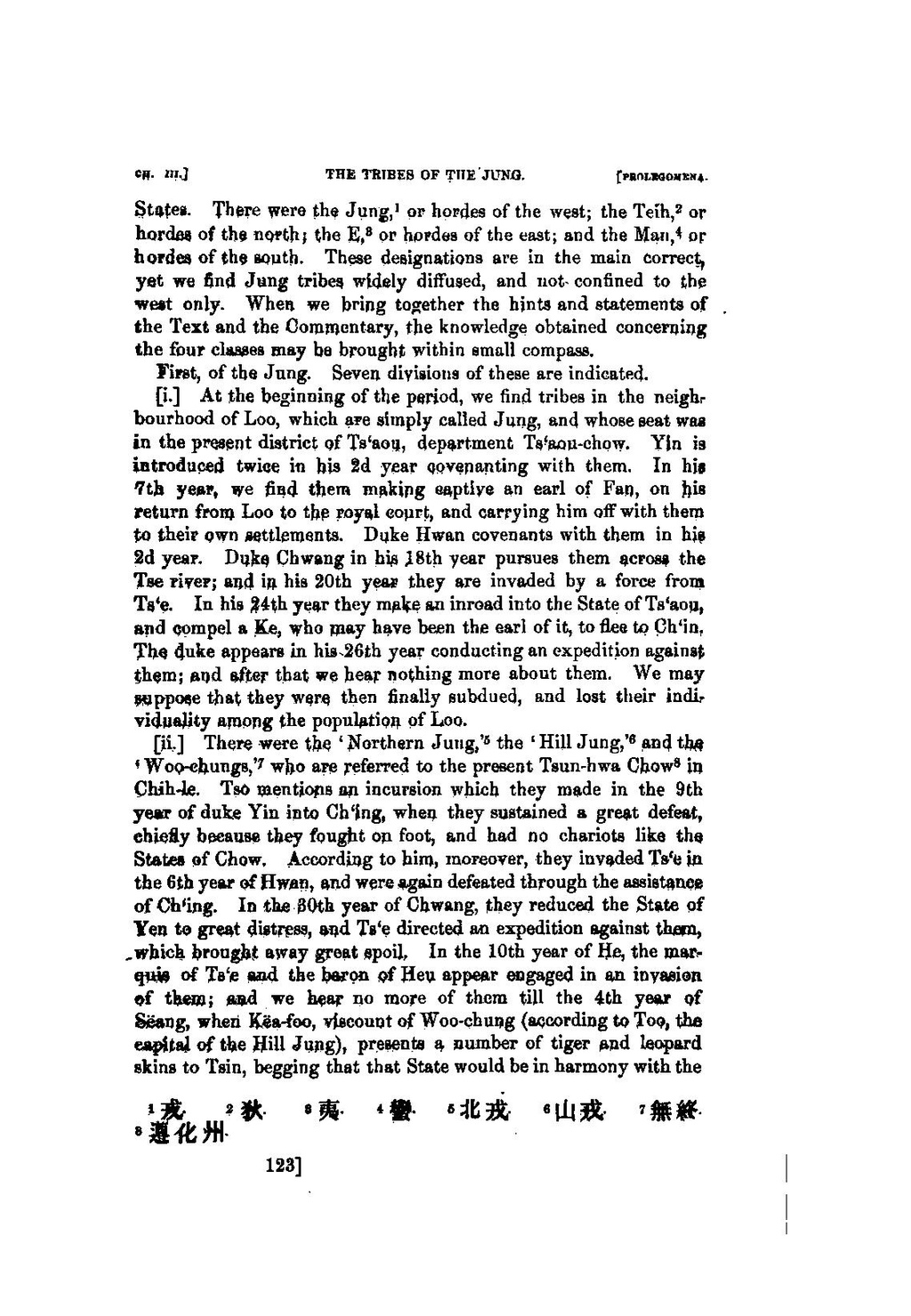States. There were the Jung,[1] or hordes of the west; the Teih,[2] or hordes of the north; the E,[3] or hordes of the east; and the Man,[4] or hordes of the south. These designations are in the main correct, yet we find Jung tribes widely diffused, and not confined to the west only. When we bring together the hints and statements of the Text and the Commentary, the knowledge obtained concerning the four classes may be brought within small compass.
First, of the Jung. Seven divisions of these are indicated.
[i.] At the beginning of the period, we find tribes in the neighbourhood of Loo, which are simply called Jung, and whose seat was in the present district of Ts‘aou, department Ts‘aou-chow. Yin is introduced twice in his 2d year covenanting with them. In his 7th year, we find them making captive an earl of Fan, on his return from Loo to the royal court, and carrying him off with then) to their own settlements. Duke Hwan covenants with them in his 2d year. Duke Chwang in his 18th year pursues them across the Tse river; and in his 20th year they are invaded by a force from Ts‘e. In his 24th year they make an inroad into the State of Ts‘aou, and compel a Ke, who may have been the earl of it, to flee to Ch‘in. The duke appears in his 26th year conducting an expedition against them; and after that we hear nothing more about them. We may suppose that they were then finally subdued, and lost their individuality among the population of Loo.
[ii] There were the ‘Northern Jung,’[5] the ‘Hill Jung,’[6] and the ‘Woo-chungs,’[7] who are referred to the present Tsun-hwa Chow[8] in Chih-le. Tso mentions an incursion which they made in the 9th year of duke Yin into Ch‘ing, when they sustained a great defeat, chiefly because they fought on foot, and had no chariots like the States of Chow. According to him, moreover, they invaded Ts‘e in the 6th year of Hwan, and were again defeated through the assistance of Ch‘ing. In the 30th year of Chwang, they reduced the State of Yen to great distress, and Ts‘e directed an expedition against them, which brought away great spoil. In the 10th year of He, the marquis of Ts‘e and the baron of Heu appear engaged in an invasion of them; and we hear no more of them till the 4th year of Sëang, when Këa-foo, Viscount of Woo-chung (according to Too, the capital of the Hill Jung), presents a number of tiger and leopard skins to Tsin, begging that that State would be in harmony with the
123]
